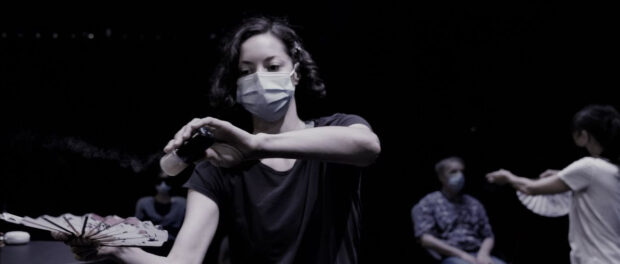Camille : A Play Worth “Seeing”
Humans can be pretty bad at reminding themselves of all the good things that they have going for them. We tend to focus on our lacks (“I wish I was taller”, “I wish this person liked me back”, “I wish I was more talented at my sport/artistic medium”), but gratitude goes a long way. Regardless, the truth is that if you are even able to just read this text, you are already part of a pretty lucky bunch — it means that you are wealthy enough to afford an electronic device and the Internet, that you were able to attend school to become literate, that you can afford spending time reading reviews on random stuff, that you have a mind that is more cultivated and bright than the average person’s (since only a very cultivated and bright mind would take the time to read such articles, of course), and most importantly, that you are at least a person who is partially sighted.
Camille: The Story was perhaps nothing more but a particularly thrilling and novel experience for some, but for those in the audience who tend to think about things more deeply, Camille was also somewhat of a wake-up call. Created by Audrey-Anne Bouchard, an artist who lives with the visual impairment Stargardt’s disease, this play is a “revolutionary, multi-sensorial experience, specially designed for people living with visual impairments”. Imagining how a person with a visual impairment experiences her daily life is not enough; Camille will force you to live as one, at least for the entire duration of the play. Each audience member is blindfolded with the softest sleep mask you will have ever used, before you even enter the theatre room. As you blindly walk up to your assigned audience’s seat, guided by a sighted helper, you are quickly overwhelmed with disorientation. Costumes, colours, carefully crafted props and the main cues we normally rely on when we are at a show no longer exist, as far as you are concerned.
Our hearing, smell and touch are constantly stimulated throughout the show, and they compensate for our loss of vision more than enough. Camille: The Story is about the loss of a treasured friendship, but apart from the overarching and broader theme of loss, its plot has no relation to the condition of being visually impaired. We follow the protagnist Pierre as he lives out a heartbeak caused by the desertion of his close-friend-and-perhaps-lover Camille, who left the city she has lived in her whole life with no intention of returning.
Although the show was unanimously found to feel terrifying at first — not because it was designed to frighten, but because the unfamiliar loss of our most important sense organ erodes any sense of trust in our safety and puts us on edge at first — it concludes in the most gentle way possible. The scarf is an important motif in the play, one that has linked Pierre and Camille together and played a role in hinting at the romantic undercurrents in their relationship. Toward the ending, the audience members embody Pierre at last, as he wraps himself in Camille’s scarf — the dearest of all his keepsakes — and tenderly sways himself in it.
Ironically, despite being utterly deprived of what many consider our most important sense, this was the most overwhelming sensory experience I have had in a while. Another irony, expressed by a particularly wise fellow audience member, is that this experience was “quite eye-opening”. Approximately 43 million people live with blindness and 295 million people live with moderate-to-severe visual impairment globally. Camille: The Story reminded us that we are part of the lucky ones, those who get to simply remove a blindfold to regain sight.
Camille: The Story takes place June 21 to July 3 at the Segal Centre (5170 Côte-Ste-Catherine). Information about the show and other productions is available HERE.






